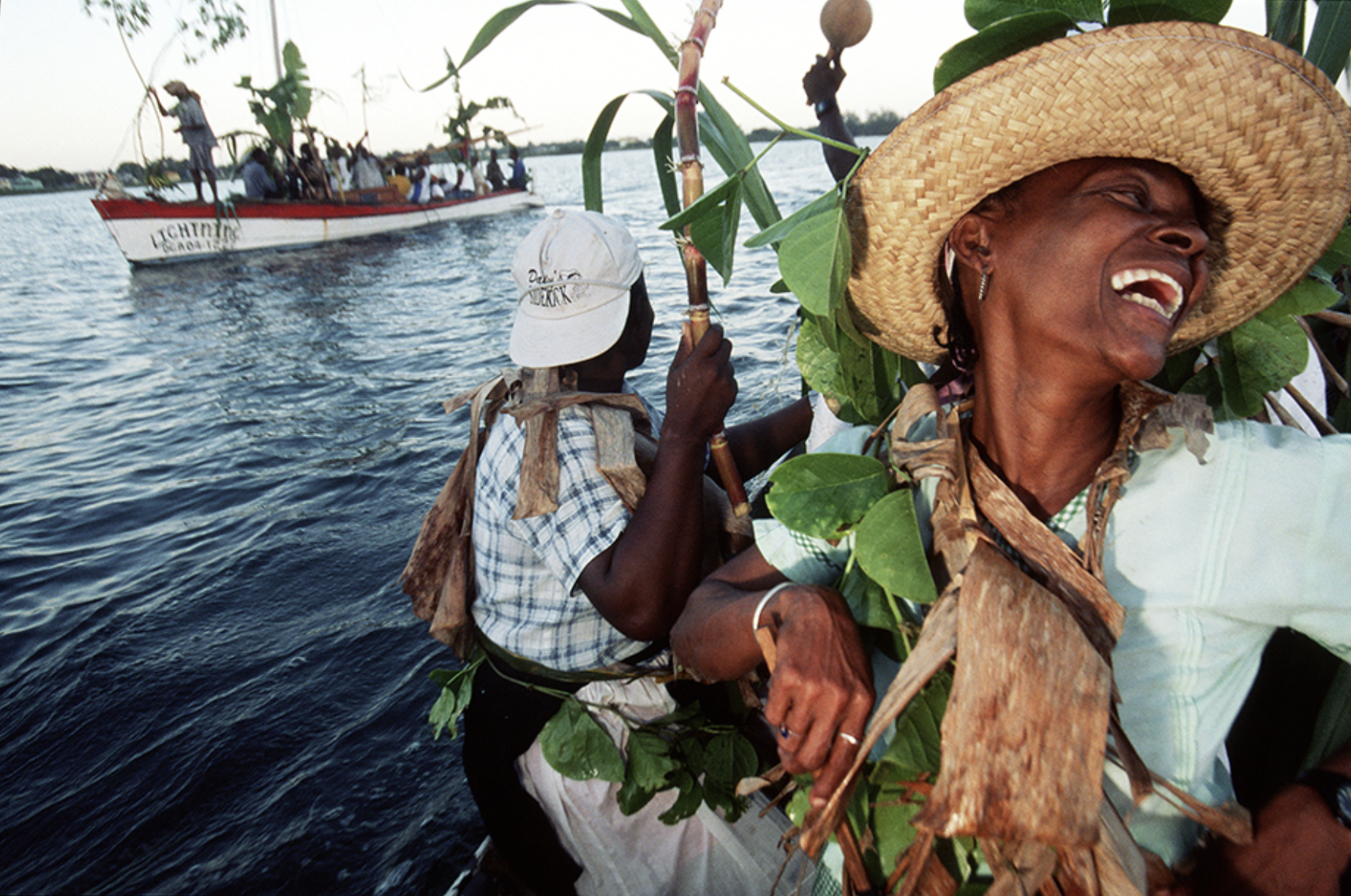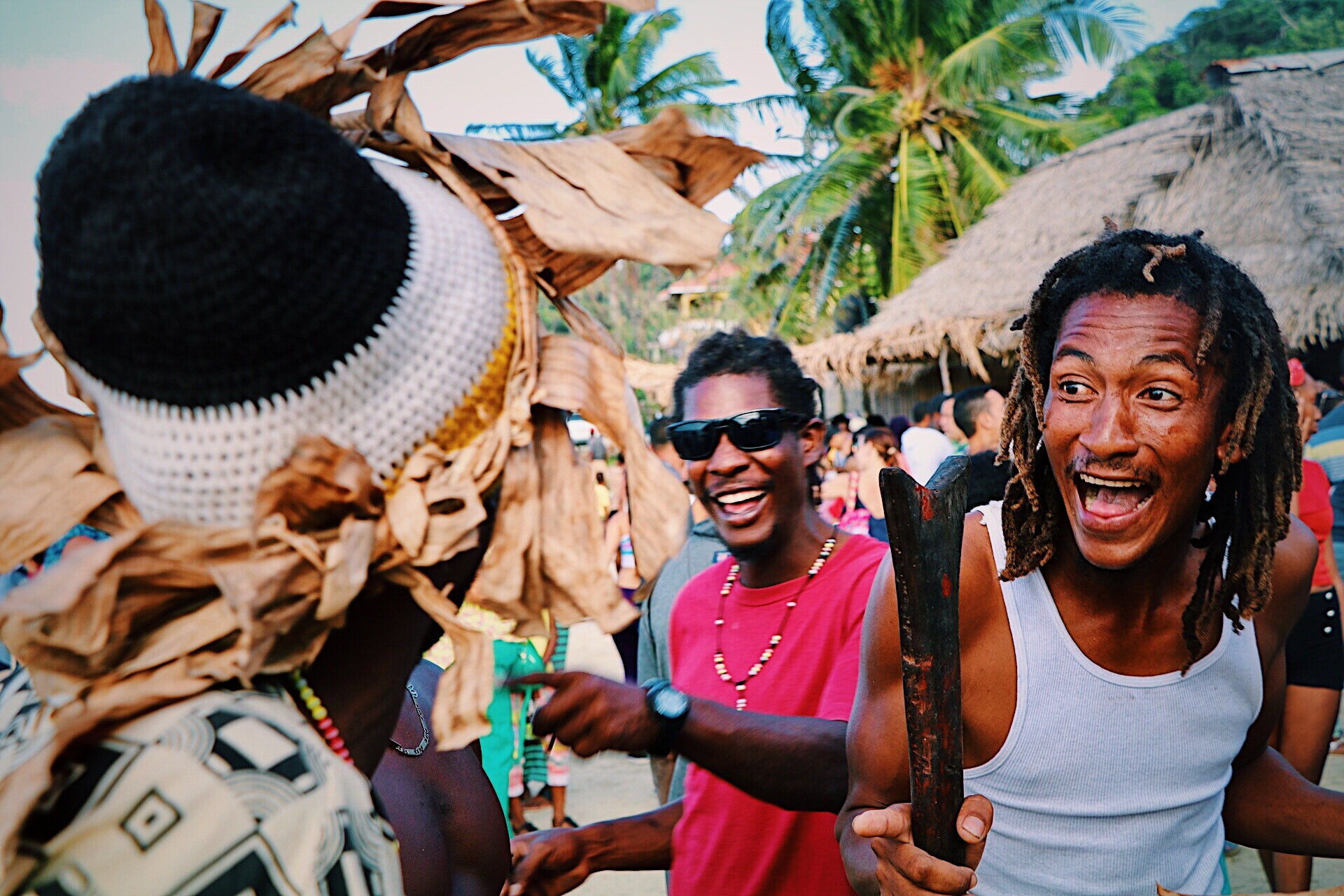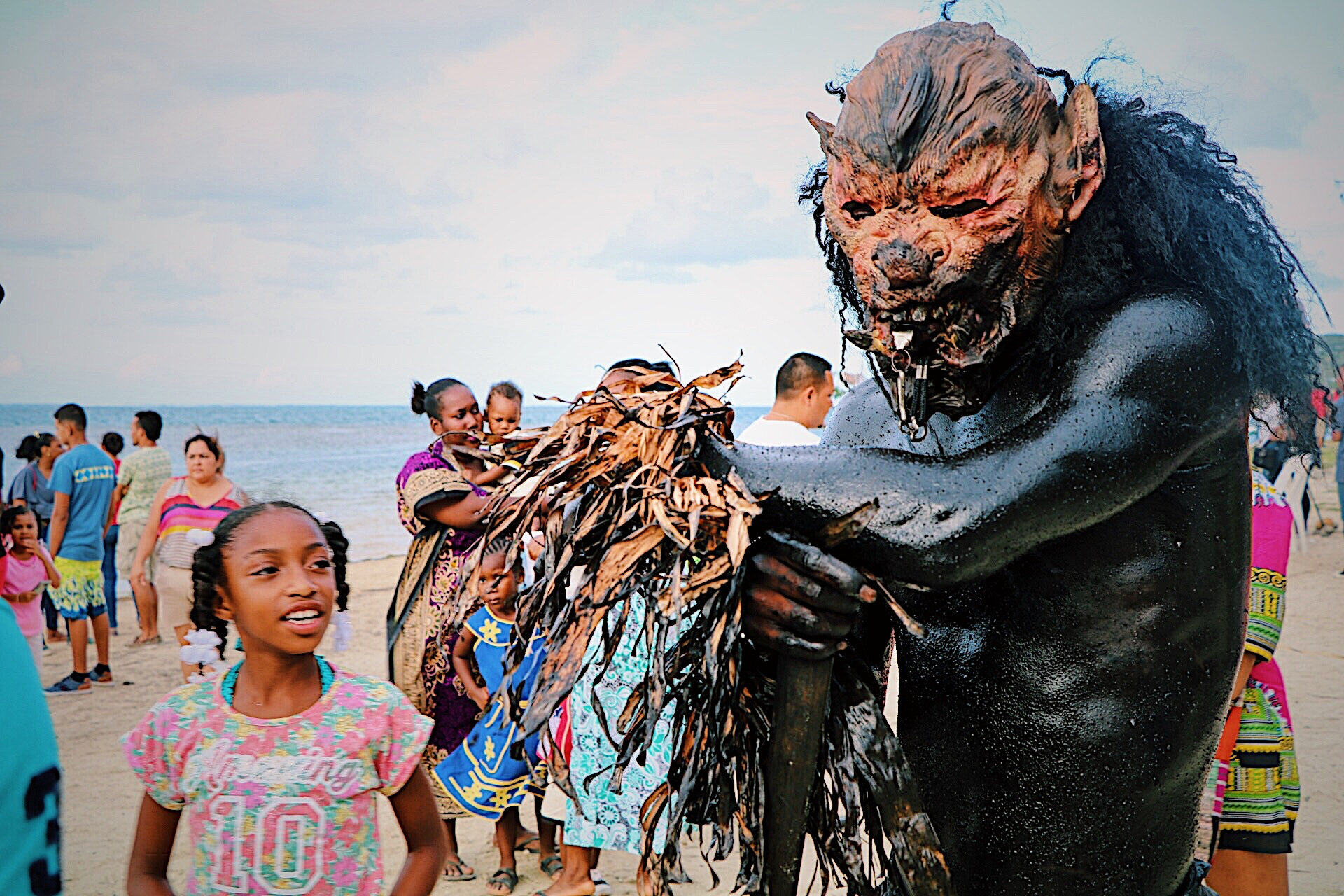
Our Culture.
The Garifuna.
Los "Garifuna" (/ɡəˈrɪfᵿnə/ gə-rif-uu-nə);(pl. Garinagu in Garifuna) Are mixed-race of descendants. The Garifuna are a mix of people from West Africa, Carib Islands, and Central Africa. Known by British colonial administrators in the early days as "Black Carib" and "Garifuna" so that they could be distinguished from "Red" or "Yellow" Caribs which were the original Amerindian population before intermixing with Africans. It is believed that the Black Carib or Garifuna are descendants of the Igneri people. The Igneri became residents of the Lesser Antilles, present day St. Vincent, Trinidad, and Dominica.
Highlight Video →
Heritage of Humanity.
The United Nations Education Scientific and Cultural Organization (UNESCO) proclaimed the Garifuna language, music, and dance a Masterpiece of Intangible Heritage of Humanity in Honduras, Belize, and in Nicaragua. The first Garifuna Summit was held in 2005 in Corn Islands, Nicaragua, with the participation of many Central American countries. Since 1797, the Garifuna have found a refuge in Roatan and along the coast of Honduras. The Garifuna people first came to Punta Gorda, Roatan, Honduras as they fled from Slavery from Spanish and British rule. The first Garifuna came from Yurime, which is a small region of St. Vincent Island.
History.
Arrival on Roatan.
The British brought the Garifuna to Roatan. Five thousand Garinagu (Garifuna) were exiled based on racial profiling. Half of the exiled Garifuna shipped to Roatan survived the voyage to Roatan. But Roatan island was too small and infertile to support even the arriving 2,500 Garifuna.
Over time, the Garifuna petitioned Spanish authorities so that they could be relocated to the mainland in Spanish colonies where they were employed by the Spanish. The Garifuna spread across the Caribbean coast and into Nicaragua, Belize, and along the Caribbean Coast of Honduras.
“Come to Punta Gorda to experience the Garifuna Culture. ”
Language.
The Garifuna language derives from the Island Carib language. The Garifuna language is spoken in Honduras, Guatemala, Belize, and Nicaragua. The Garifuna language is an Arawakan language. It has English, French, & Spanish influences. The is a reflection of the Garifuna people and their association and interaction with various colonial people. Most, if not all, Garifuna are bilingual or multilingual. Most Garifuna has as their first language the native language of the country they live in; English in Belize and Spanish in Honduras, for example. Also, most of the Garifuna people also speak Garifuna.
Garifuna Music.
Garifuna music is very traditional and different from the rest of Central American music. The most famous form of music is Punta. Punta dancers are charismatic and move their hips in a circular motion while keeping their upper bodies still. Punta is still played using traditional instruments. But in modern times, Punta has experienced an electrification to its sound which is commonly referred to as Punta Rock.
The Garifuna people have a variety of music in addition to Punta. They also have hungu-hungu, combination, wanaragua, sambai, and Paranda among other. Paranda is showcased in the video found in our Roatan Blog.
When "La Banda Blanca" of Honduras released their ever popular song "Sopa de Caracol" (Conch Soup), it sold over 3 million copies. Originally, Sopa de Caracol was written by Belizean Chico Ramos. Garifunas from Belize felt cheated, but enjoyed the famous song and celebrated its success as it brought light to all Garifuna people and their culture.
Annual Festival.
The Annual Festival is not one to miss. It is full of festivities, dancing, and singing of old chants and songs in their native Garifuna language. There are several small performances throughout the day, but the main event is a march, along with the bay on foot and on boat that ultimately ends in Punta Gorda. The march is a re-enactment of the Garifuna arrival and subsequent welcoming by the local islanders. Local performers dress the part in their native and typical dress attires which make the celebration all the more photo-centric and special.
Garifuna Food.
The local festivities include the serving of typical foods like coconut bread & Machuca (mashed plantain & plantain soup). But the local beverage of "Guifity" is a key attraction. Guifity is an alcoholic beverage which mixes rum, roots and mixed herbs into a bitter drink.
Cuisine.
Garifuna Food and Beverages: Historically the Garífuna social structure holds has a community figurehead and a Council of Elders. In addition to traditional occupations such as agriculture and fishing, the Garifuna produce a great variety of foods and drinks, many rich in proteins, vitamins, and calories. Some of their better-known dishes include Tatau (Garifuna capped with a variety of tubers and seafood in coconut spade), Areba or Casabe (large tortilla of baked cassava), Hudutu (hurts), etc.
One of the Garifuna's traditional drinks is called Hin, which is a sort of beer made from yuca. There is also the Marmara drink which is prepared with fermented corn, and sugar cane juice. But the most popular Garifuna beverage is Gifiti. As for singing, dancing and rituals are an important part of the cultures manifestations. One of the most important rituals is the Denominated Daga, a tradition dedicated to the dead where a barbaric Indian (Indio Barbaro) will accost women and children for a monetary tip. The Chugú is also a spiritual ritual.

Ethnic Groups.
Yoro Indigenous.
Ethnicities.
The Yoro Indigenous Tribes Federation (FETRINY) operated until 1984 and in 1985 the Yoro Tribes Federation (FETRIXY), known as a strongest and belligerent organization.
The FETRIXY is also well known for being the most developed organization for the Garifuna ethnicities. It has formed 47 communities in the departments of Cortés, Atlántida, Islas de Bahía, Colón and Gracias a Dios. They have a population of 350,000 inhabitants including population groups settled in San Pedro Sula and Tegucigalpa. The FETRIXY is also represented in Belize, Guatemala, and Nicaragua.
Los Garifuna.
Most of the Garifuna communities are located in coastal areas close to the urban areas of Puerto Cortes, Tela, La Ceiba, and Trujillo. According to Ruy Galván, during the XVII and XIX centuries, several Negro contingents arrived in Honduras. At present, however, two large groups of Afro-Caribbean blacks are identified: the Garifuna and English-speaking Blacks. The later settled primarily in the Bay Islands, La Ceiba, & Atlántida. Each group had its cultural peculiarities. Most of these Afro-Caribs were brought from Africa as slaves to work originally in Jamaica and Grand Cayman. The initial populations are estimated to of approximate 20,800 inhabitants.
Native Tongue.
The Garifunas, also known in their native tongue as "Garinagu," which in Castilian means "Black Caribes," have their origin in the Island of Yurumain also known as San Vicente, in the smaller Antillas off the coasts of Venezuela. The Garinagu are descendants of Caribbean Arawakas, and black Africans, who arrived on the island escaping slavery. According to oral tradition, they are descended from the African ethnic groups Efik, Ibo, Fons, Ashanti, Yoruba and Congo, abducted from the coastal regions of West Africa (corresponding to the modern states of Ivory Coast, Ghana, Nigeria, Cameroon, and Congo) by Spanish and Portuguese slave traders. In the 17th century, several vessels sailed off Yurumain Island (San Vicente) The Caribs slaves took refuge and gradually interbred with native Carib Indians.
La Sociedad.
Organization development began in 1977 with the organizational development of the Organización Fraternal Negra de Honduras (OFRENEH), which went through several stages, among them the Sociedad Garífuna Hondureña (SOGANAH) and others that were later dissolved for different reasons, finally formed what is now known as the OFRANEH.
The Pech (PAYA).
The Pech Son an ethnic group composed of nine tribes that are:
The Vallecito, the Pueblo Nuevo, the Subirana, Agua Zarca, Culuco, Jocomico, and the Pisijire In the municipality of Dulce Nombre de Culmí. Then we have Santa María del Carbón in the municipality of San Esteban which is in the department of Olancho. And finally, Silin in the municipality of Trujillo, department of Gracias a Dios.
Los Pech, although they have been historically subjected to the process of acculturation, they still preserve their language and part of their customs that are manifested in foods, drinks and musical instruments. For example, the Tempuka (a kind of long drum), and the camachá (similar to the maraca). The Pech depend on the agriculture, hunting, and fishing for their subsistence. Their main crops are cassava, beans, and corn. From these foods, beverages are also made and fermented to produce alcoholic intoxicants. They also practice breeding domestic animals. The extraction of the resin from the liquidambar tree, and the production of handicrafts.
The Pech are also known pejoratively as PAYAS. They do not have a known origin as its evolution is lost between history and myth. They are likely descendants of the CHIBCHAS, since the speakers of this language left South America probably 3,000 years ago and settled down along the road between Colombia and Central America. By the time they came into contact with the Spaniards, the Pech had a socio-economic level and a political system almost equal to that of its neighboring tribes (Tawahkas, Tolupanes, etc.).
During the colony, they extended from the Aguán to the Patuca River in northeastern Honduras. In pre-Hispanic times they stretched from the north of the Aguán River to the end of Gracias a Dios. The Pech (or Paya) language is identified as a language of the macro-chibchade, which is a language of South American origin. The first Pech congress promoted by the Higher School of Teachers, Francisco Morazán, which took place between November 29th and 30th of 1885 in the Community of Subirana.








